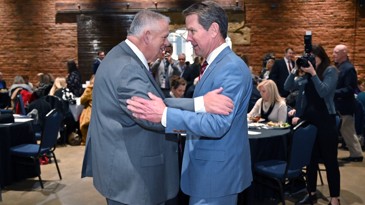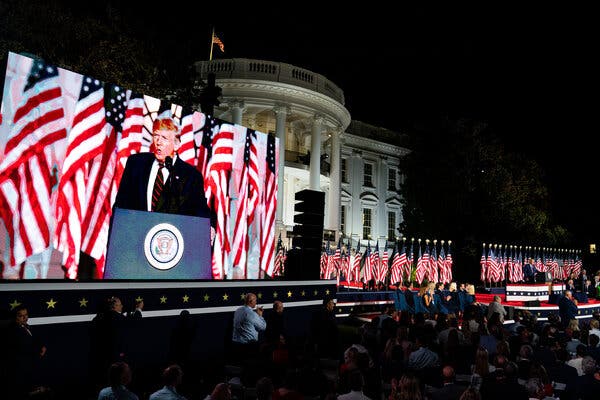
Palm trees, golden statuary and the fog hugging the California coastline characterize the view from Hearst Castle. (Photo by John Kelly/TWP) (John F. Kelly)
The Los Angeles Times on Wednesday marked a milestone in California politics: Orange County, once a bastion of Republican politics in the state and nationally, now has more registered Democrats than Republicans.
This is not, however, simply some sort of reaction to the current occupant of the White House from a more-traditional cadre of conservatives. Instead, it’s in large part a reflection of a long-term shift in the county and the state — and in the country overall.
The state of California has voter registration data online going back to 1999. We picked out five years — 1999, 2004, 2009, 2014 and 2019 to compare how party registration in each California county had shifted.
In Orange County, several trends were at play. In 1999, the county had nearly 600,000 registered Republicans, about 400,000 registered Democrats and only about 200,000 registered voters who belonged to third parties or didn’t identify a political party. By 2004, the numbers of all three groups had increased — but by 2009, the first year of Barack Obama’s presidency, the number of Republicans had started to dip.
In February, all three groups had about the same population: Between 520,000 and 540,000. The blue line overtook the red one this week.

(Philip Bump/The Washington Post)
The significance of this change in Orange County in particular derives from its history of being staunchly red. Between 1960 and 2012, Orange County voted Republican in every election, regardless of the national mood. It was one of only two California counties in 2016 to flip from red to blue, and the only one of those two to have not voted Democratic in the previous 60 years.
In 1999, in fact, Orange County was the only county in California to have a Republican majority among its registered voters. There were, that year, 11 counties that were majority-Democrat.
But look what’s happened over time. In 2004, there were nine counties in which one party had a majority. In 2009, 11. In 2014, eight. In February? Five.

(Philip Bump/The Washington Post)
The shift in Orange County that’s particularly remarkable is that increase in voters who don’t participate in either of the major political parties. In both California overall and in Orange County, the shift in partisan identity has been driven not by shifts in the density of Democrats, but, instead, in the decline of Republicans and the increase in independents and members of third parties.

(Philip Bump/The Washington Post)
Nationally, we’ve seen a similar shift away from the parties and to people registering as independents. In California, though, the erosion has been fairly one-sided.
That’s not the case in every county in California, of course. In the 10 counties with the biggest shifts in favor of Democratic density and the 10 counties with the biggest shifts in favor of the Republicans, it’s universally the case that the party on the decline was eaten up by third-party and independent registrations. The party that saw its advantage grow generally maintained about the same density.

(Philip Bump/The Washington Post)
So why is California turning so blue if the effects are going in both directions? Well, for one thing, there are 33 counties in which Democratic registration density increased since 1999 and only 25 in which Republican density increased.
But those counties that are getting more blue include the 10 largest counties in the state. The 11th largest county, Central Valley’s Fresno County, got slightly more Republican since 1999. The other 10 saw the margin of registrations between the parties expand an average of 10 points in the Democrats’ favor.
If we scale the chart above to population, the imbalance is obvious. (The boxes below are in the same order as those above.)

(Philip Bump/The Washington Post)
But why Orange County? Why is this particular place growing more Democratic?
One reason is likely that its population is getting more diverse, as we noted last November when, for the first time since 1940, its entire congressional delegation became Democratic. How it votes in the presidential race correlates to how densely white the county is.

(Philip Bump/The Washington Post)
As the Los Angeles Times notes, the county is also seeing increasing densities of college-educated voters, a group that’s more Democratic — and more skeptical of President Trump.
The good news for Trump? Orange County voted Republican in every election from 1992 to 2012, even while California voted blue. While the flip from red to blue might reflect broader negative trends for the GOP, it’s not going to change what happens to California’s electoral votes next year one bit.


